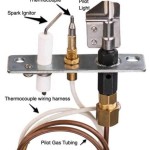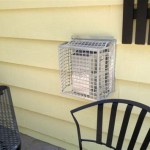Exploring the Benefits and Considerations of Portable Gas Fireplaces for Indoor Use
Portable gas fireplaces offer a convenient and aesthetically pleasing solution for supplemental heating and ambiance in various indoor spaces. Unlike traditional wood-burning fireplaces, these units require no chimney or extensive installation, making them an appealing option for apartments, condos, and homes without existing fireplace infrastructure. This article will explore the key aspects of portable gas fireplaces, covering their benefits, types, safety considerations, and maintenance requirements.
Understanding the Appeal of Portable Gas Fireplaces
The primary draw of portable gas fireplaces lies in their ease of use and versatility. They provide instant heat at the flip of a switch or the push of a button, eliminating the need for wood gathering, stacking, and tending to a fire. This convenience is particularly valuable for individuals with busy lifestyles or those who prefer a hassle-free heating solution. Furthermore, the portability aspect allows users to move the fireplace from room to room, focusing warmth where it is most needed. This can result in energy savings by reducing the need to heat the entire house.
Beyond their practicality, portable gas fireplaces also offer a significant aesthetic advantage. Modern designs often mimic the look of traditional fireplaces, featuring realistic-looking flames and ember beds. Some models even incorporate decorative logs or stones to enhance the visual appeal. This allows homeowners to enjoy the cozy ambiance of a fireplace without the mess and effort associated with wood-burning alternatives. The availability of various styles and finishes ensures that a suitable portable gas fireplace can be found to complement any interior décor.
The operational cost is also a factor to be considered. While the initial investment in a portable gas fireplace may be higher than that of an electric heater, the long-term operating costs can be lower, depending on the cost of electricity and gas in a specific region. Natural gas, in particular, is often a more economical fuel source than electricity, making portable gas fireplaces a potentially cost-effective heating solution over time.
Types of Portable Gas Fireplaces and Their Features
Portable gas fireplaces are available in several distinct types, each with its own unique characteristics and features. Understanding these differences is essential for selecting the right unit to meet individual needs and preferences. The two primary categories are vent-free (or ventless) gas fireplaces and direct-vent gas fireplaces. Vent-free models are designed to operate without any external venting system, while direct-vent models require a vent pipe to exhaust combustion byproducts outside.
Vent-Free Gas Fireplaces: These fireplaces are the most common type of portable gas fireplace. They burn gas very efficiently, minimizing the production of harmful byproducts such as carbon monoxide. Advanced oxygen depletion sensors (ODS) are incorporated into the design to automatically shut off the gas supply if oxygen levels in the room become dangerously low. Vent-free models are relatively easy to install, requiring only a connection to a gas line (either natural gas or propane) and a level surface. However, it is crucial to adhere strictly to the manufacturer's instructions regarding room size and ventilation requirements. Vent-free fireplaces are best suited for well-ventilated areas and should not be used in confined spaces, such as bedrooms or bathrooms. Regular monitoring of carbon monoxide levels is also recommended.
Direct-Vent Gas Fireplaces: Direct-vent fireplaces offer a higher level of safety compared to vent-free models because they draw combustion air from outside and expel exhaust gases outside through a dedicated vent pipe. This eliminates the risk of indoor air contamination and makes them suitable for a wider range of environments, including bedrooms. Direct-vent models typically require professional installation to ensure proper venting and gas line connection. While they are less portable than vent-free models due to the venting requirements, they provide a safer and more reliable heating solution.
Beyond these two primary categories, portable gas fireplaces can also be distinguished by their fuel source: natural gas or propane. Natural gas fireplaces require a connection to a natural gas line, while propane fireplaces use a refillable propane tank. The choice between these two fuels depends on the availability of a natural gas connection and personal preferences. Propane fireplaces offer greater flexibility in terms of placement, as they are not tied to a gas line. However, they require regular tank refills, which can be inconvenient for some users.
Other features to consider when selecting a portable gas fireplace include ignition type (electronic or manual), heat output (measured in BTUs), flame height adjustment, and remote control operation. Electronic ignition systems offer greater convenience and reliability compared to manual ignition systems. Higher BTU ratings indicate greater heat output, which is important for heating larger rooms. Flame height adjustment allows users to customize the appearance of the flame and control the amount of heat produced. Remote control operation provides added convenience and allows users to adjust the fireplace settings from a distance.
Safety Precautions and Maintenance for Portable Gas Fireplaces
While portable gas fireplaces offer numerous benefits, it is essential to prioritize safety when using them. Adhering to all safety precautions and following manufacturer's instructions is crucial for preventing accidents and ensuring safe operation. One of the most important safety measures is to ensure adequate ventilation, especially when using vent-free models. Regular monitoring of carbon monoxide levels with a CO detector is highly recommended. The detector should be placed in the same room as the fireplace and tested regularly to ensure it is functioning properly.
Furthermore, it is vital to keep combustible materials away from the fireplace. Curtains, furniture, and other flammable items should be kept at a safe distance to prevent them from catching fire. Children and pets should be supervised around the fireplace to prevent accidental burns or injuries. The fireplace should never be left unattended while it is operating. Before leaving the room or going to bed, always turn off the fireplace and ensure that the gas supply is completely shut off.
Regular maintenance is also essential for ensuring the safe and efficient operation of portable gas fireplaces. This includes cleaning the burner assembly, inspecting the gas line connections, and checking the ODS (oxygen depletion sensor) functionality. The burner assembly should be cleaned regularly to remove dust and debris that can interfere with proper combustion. The gas line connections should be inspected periodically for leaks. A soapy water solution can be used to test for leaks. If any leaks are detected, the gas supply should be shut off immediately and a qualified technician should be contacted to repair the leak.
The ODS should be tested regularly to ensure that it is functioning properly. This can be done by intentionally blocking the oxygen supply to the fireplace and observing whether the gas supply shuts off automatically. If the ODS fails to shut off the gas supply, it should be replaced immediately. Regular professional servicing of the fireplace is also recommended to ensure that all components are functioning properly and to identify any potential safety hazards.
In addition to these safety and maintenance guidelines, it is important to be aware of local regulations and building codes regarding the use of portable gas fireplaces. Some jurisdictions may have restrictions on the types of gas fireplaces that can be used indoors or may require permits for installation. Before purchasing and installing a portable gas fireplace, it is advisable to check with local authorities to ensure compliance with all applicable regulations.
Selecting the right portable gas fireplace requires careful consideration of individual needs, preferences, and safety requirements. By understanding the different types of fireplaces, their features, and the necessary safety precautions, homeowners can make an informed decision and enjoy the warmth and ambiance of a gas fireplace without compromising safety.
Finally, always consult the manufacturer's instructions for specific safety and maintenance recommendations related to your particular model of portable gas fireplace. Each unit may have unique features and requirements that are essential to understand for safe and efficient operation.

Portable Fireplaces Eoy All The Benefits Of A Fireplace With No Drawbacks

10 Unique Portable Fireplaces Modern Blaze

10 Portable Fireplaces For Petite Places Fireplace Indoor Design

Super Cool A Portable Fireplace For Indoors Or Outdoors Little On The Modern Side My Usu Design Outdoor Designs

Small Portable Fireplaces Yes They Re Real

10 Portable Fireplaces For Petite Places Brit Co

4 2kw Portable Indoor Heater With Regulator Black

Ventless Gas Fireplace Propane

12 Cozy Portable Fireplace Ideas For The Modern Home Decoist

Procom Vent Free Indoor Stove 25 000 Btu Standing Dual Fuel Propane And Natural Gas 170173 The Home Depot








